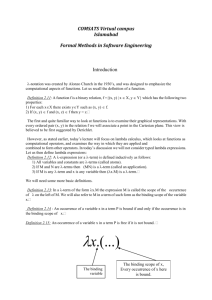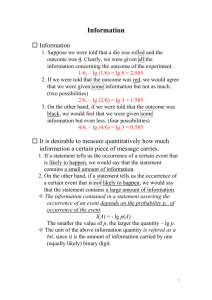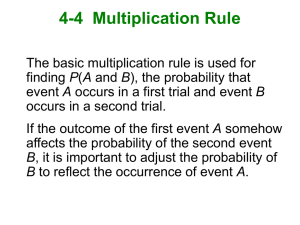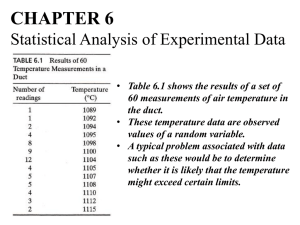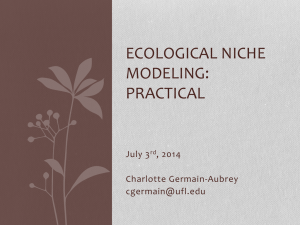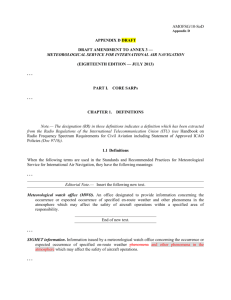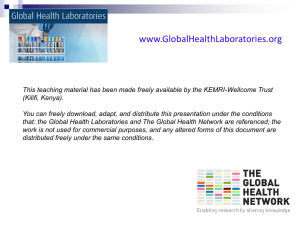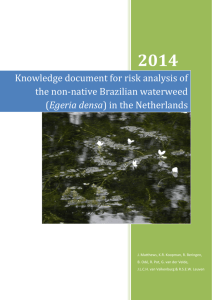Siltcoos macrophytes - Woahink Lake Association
advertisement
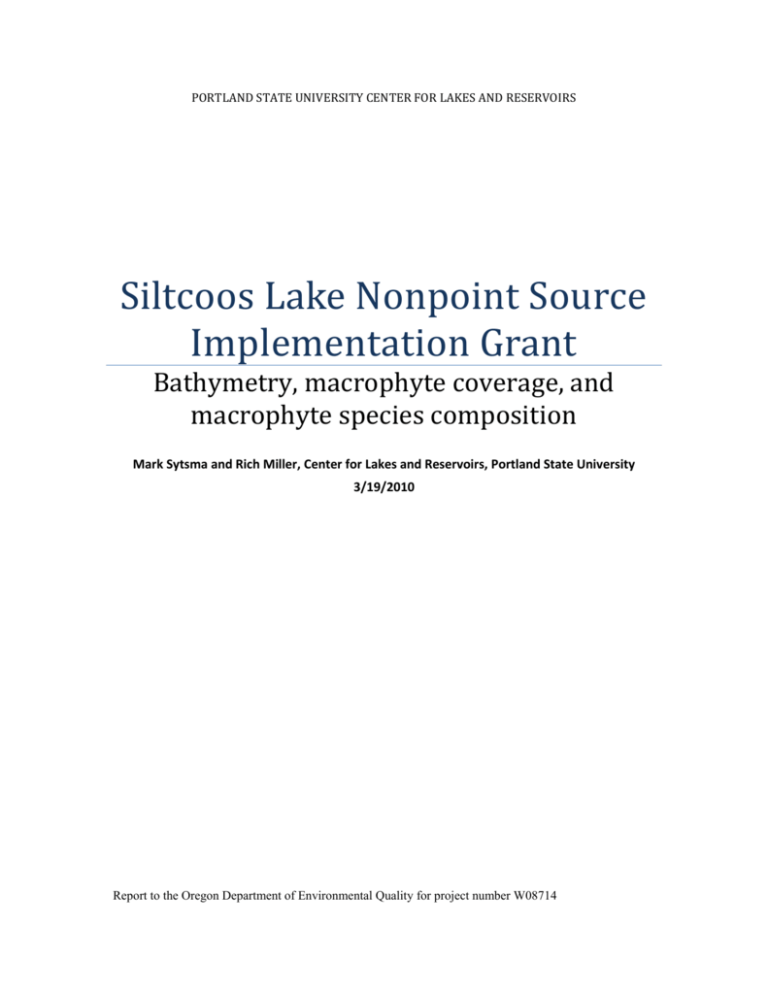
PORTLAND STATE UNIVERSITY CENTER FOR LAKES AND RESERVOIRS Siltcoos Lake Nonpoint Source Implementation Grant Bathymetry, macrophyte coverage, and macrophyte species composition Mark Sytsma and Rich Miller, Center for Lakes and Reservoirs, Portland State University 3/19/2010 Report to the Oregon Department of Environmental Quality for project number W08714 Introduction The morphometric features of lakes are integral in assessing the lake’s water and heat budgets, the potential for sediment resuspension, and the suitability for macrophyte growth. Hydroacoustic data were collected during the summer of 2008, data were processed and bathymetric and macrophyte coverage maps were generated from the data. Methods Hydroacoustic data were collected along parallel transects spaced approximately 200 m apart and around the perimeter of the lake with a Biosonics Inc. 430 kHz digital scientific echosounder synchronized with a Trimble Pro XRT GPS receiver or a Corvallis MicroTechnologies Alto G12 GPS receiver. GPS data were Coast Guard beacon corrected in real time and recorded once per second with the Trimble receiver or once per 3 seconds with the Alto G12 receiver. Hydroacoustic data were collected at 5 pings per second, a pulse width of 0.1 milliseconds, and a minimum sensitivity threshold of -130 dB. The hydroacoustic transducer face depth was recorded on each sampling date and daily water surface elevations were obtained from the Oregon Water Resources Department. Data files were processed twice using Biosonics Inc. Visual Analyzer software and exported as text files: once to determine the depth from the transducer face to the sediment-water interface, and once to determine the depth to the macrophyte canopy. Each set of text files included time, latitude, longitude, depth to sediment or the macrophyte canopy, the raw data file name, and data collection settings. Since location was recorded once or three times per second and depth was recorded five times per second, locations were interpolated between measurements so all depth recordings have a unique location. Acoustic text files were imported into a Microsoft ACCESS database along with the daily water surface elevations and depths of the hydroacoustic transducer face. All data were corrected to elevation above sea level and depth data were referenced to 2.4 MASL since the water levels in Siltcoos Lake were near 2.4 MASL during the summer of 2008, and during previous years (Figure 1). Lake level (MASL) 4 3.2 2.4 1.6 2000 2001 2002 2003 2004 2005 2006 2007 2008 2009 Date Figure 1. Siltcoos Lake level measured at the Westlake dock. Data courtesy of the Oregon Water Resources Department. A bathymetric grid was interpolated from the location, depth, lake shoreline points using the Geostatitical Analyzer tool in ArcGIS. Lake volume and surface area statistics by depth were calculated using the 3-D Analyzer tool in ArcGIS. Since macrophyte canopy height had high variance from point to point unlike sediment depth, macrophyte coverage was not interpolated; rather, a probability of occurrence model and map based on the bathymetric grid was generated (see Appendix A). A canopy height probability model and map will also be generated. Results Over 630,000 hydroacoustic data points were collected and processed (Figure 2). The deepest portions of the lake were approximately 6.5 m below the 2.4 MASL reference and located near the eastern shore and the outlet of the Fiddle Creek Arm (Figure 3). The surface area and volume of the lake bases on the interpolated grid at the reference level of 2.4 MASL 1254 hectares and 54 cubic hectometers respectively (Figure 4). Figure 2. Location of Siltcoos Lake macrophyte grab samples (dots) and hydroacoustic transects (lines). Figure 3. Bathymetric map of Siltcoos Lake. Surface area (hectares) 0 300 600 900 Volume (cubic hectometers) 1200 1500 0 1 2 3 4 5 6 7 40 60 0 Depth below 2.4 MASL (m) Depth below 2.4 MASL (m) 0 20 1 2 3 4 5 6 7 Figure 4. Siltcoos Lake surface area and volume by depth from the 2.4 MASL reference. Macrophytes were present to about 4.8 m depth from the reference water surface elevation based on the hydroacoustic data (Figure 5). The maximum canopy height of 95% of the hydroacoustic data points within a given depth was approximately 1.8 m. The tallest macrophytes occurred between a depth of 3 and 4.5 m. Based on the hypsographic curve generated for Siltcoos Lake (Figure 4), 51% of the sediment surface is less than 4.8 m deep, the maximum depth suitable for macrophyte growth. If the water level was dropped by one meter, 96% of the sediment surface would be suitable for macrophyte growth. The probability model for occurrence of Egeria densa generated from grab sample data indicates a large portion of the sediment surface is covered with E. densa, the most common macrophyte species in Siltcoos Lake (Figure 6). Figure 5. Boxplots of the hydroacoustic estimated submersed macrophyte canopy height as a function of depth at 0.1m depth intervals. Boxes are interquantile ranges, whiskers are the 5 th - 95th percentile ranges, and vertical lines are median values of hydroacoustic data. Figure 6. Probability of occurrence of Egeria densa in Siltcoos Lake as a function of depth. Section 3: Draft Report for Component 3: Assess macrophyte species composition Grab samples were collected and processed from three hundred points in Siltcoos Lake (Figure 2). Twenty six species were encountered in Siltcoos Lake ( Table 1) including four known non-native species: Egeria densa (Brazilian elodea), Myriophyllum aquaticum (parrotfeather milfoil), Myriophyllum heterophyllum (variable leaf milfoil), and Vallisneria americana (wild celery). Macrophytes were present in 79% of the 300 samples collected from the 0.5 to 5 m sample frame ( Table 2). E. densa was the most common species present by far at 45% of the sample sites. E. densa was also had the most biomass when present in a sample with the exception of yellow water lily (Nuphar lutea polysepala) which was only present in one sample ( Table 2). Other common species included Vallisneria americana, Elodea canadensis, and Ceratophyllum demersum. No other species were present at more than 10% of the sample sites. The invasive species Myriophyllum heterophyllum was present at only 7% of the sites (22 sites); however, where present it covered a large area, had high biomass, and excluded most other species. Three species, Egeria densa, Vallisneria americana, and Elodea canadensis were present at enough sites to construct predictive models of presence and absence based on depth (Appendix A). Table 1. List of aquatic plant species encountered in Siltcoos Lake with Integrated Taxonomic Information System species identification code (ITIS 2009) and native status (USDA, NRCS 2009). ITIS Native Uncertain code Scientific_name Common names status taxonomy? Native Brasenia schreberi water shield no 18370 Native Callitriche hermaphroditica autumn water starwort no 32057 Native Ceratophyllum demersum coontail, common hornwort no 18403 Non-native Egeria densa Brazilian elodea no 38972 Unknown Eleocharis sp. spikerush no 40010 Native Elodea canadensis common waterweed no 38937 Native Megalodonta beckii Beck's watermarigold no 38081 Non-native Myriophyllum aquaticum parrotfeather milfoil no 503904 Non-native Myriophyllum heterophyllum Variable leaf water milfoil no 27044 Native Najas flexilis slender water nymph no 38996 Unknown Nitella sp. brittlewort no 9467 Native Nuphar lutea polysepala yellow pond lilly, splatterdock no 517578 Native Potamogeton amplifolius bigleaf pondweed no 39021 Native Potamogeton foliosus leafy pondweed yes 39019 Native Potamogeton natans floating leaf pondweed no 39008 Native Potamogeton praelongus white stemmed pondweed no 39042 Native Potamogeton pusillus small pondweed yes 39017 Native Potamogeton richardsonii Richardson's pondweed no 504558 Native Potamogeton robbinsii fern-leaf pondweed no 504559 Unknown Potamogeton sp. unknown pondweed no 39005 Native Potamogeton zosteriformis flatstem pondweed no 39055 Native Scirpus tabernaemontani softstem bulrush yes 521154 Native Scirpus subterminalis water bulrush no 40238 Native Stuckenia pectinata sago pondweed no 757504 Native Utricularia macrorhiza U. vulgaris, bladderwort no 34456 Non-native Vallisneria americana tape grass, wild celery no 38951 Table 2. Occurrence and wet weight of macrophyte species in 300 random samples collected from Siltcoos Lake between 0.5 and 5 m deep. Number of occurrences Probability of Average wet Species in 300 samples occurrence weight/sample (g) Egeria densa 135 45 147 Vallisneria americana 56 19 19 Elodea canadensis 48 16 37 Ceratophyllum demersum 31 10 31 Myriophyllum heterophyllum 22 7 123 Najas flexilis 21 7 6 Nitella sp. 19 6 8 Potamogeton zosteriformis 14 5 24 Megalodonta beckii 10 3 12 Potamogeton pusillus 10 3 7 Potamogeton robbinsii 9 3 49 Scirpus tabernaemontani 9 3 18 Potamogeton praelongus 7 2 16 Stuckenia pectinata 5 2 14 Potamogeton amplifolius 4 1 17 Utricularia macrorhiza 4 1 23 Callitriche hermaphroditica 2 1 3 Potamogeton richardsonii 2 1 3 Brasenia schreberi 1 0 30 Nuphar lutea polysepala 1 0 360 Potamogeton foliosus 1 0 3 Potamogeton natans 1 0 20 Scirpus subterminalis 1 0 3 Myriophyllum aquaticum 0 0 0 Potamogeton sp. 0 0 0 Eleocharis sp. 0 0 0 Any macrophyte 238 79 120 No macrophytes 62 21 - USDA, NRCS. 2009. The PLANTS Database (http://plants.usda.gov, 30 July 2009). National Plant Data Center, Baton Rouge, LA 70874-4490 USA. ITIS. 2009. Retrieved 30 July 2009 from the Integrated Taxonomic Information System on-line database, http://www.itis.gov. Appendix A. Prediction of aquatic macrophytes species occurrence along a depth gradient in Siltcoos Lake using Huisman-Olff-Fresco models. INTRODUCTION Aquatic macrophytes play important ecological roles in lakes including providing habitat and altering nutrient cycling and energy flow within a system. There are many factors that determine spatial distribution of macrophytes species including growth and dispersal characteristics, competitive ability for space and nutrients, sediment characteristics, and habitat disturbance. These factors often result in patchy distributions of macrophytes species within a lake. The underwater light climate, however, can have a strong influence on macrophyte distributions resulting in species optima and tolerance ranges along a light climate gradient, or species niches. I used a proxy of light climate, depth, to create prediction models for the distribution of macrophytes in Siltcoos Lake: a large (1280 ha), shallow (7 m maximum) lake located on the Central Oregon Coast (Figure 7). I used depth as a predictor of macrophytes distribution rather than light climate for two reasons: one, it integrates the variation in light climate experienced during the growth of macrophytes over time, and two, it is easily and quickly measured. The prediction models can be used to simulate the spatial distribution of macrophytes in the lake under different lake level or water clarity conditions that may result from lake management activities. Figure 7. Location of Siltcoos Lake and macrophytes sampling areas. Since the relationship between macrophytes presence and depth had a binary response variable, was expected to have a non-normal error distribution and was expected to have heteroskedastic variance; linear models were not appropriate. In addition, logit generalized linear models that are used to model binary response variables are not sufficient if species have a unimodal reponse to the depth gradient. I used Huisman-OlffFresco (HOF) models (Huisman et. al 1993) to predict macrophyte distributions as a function of depth in Siltcoos Lake. The models are a set of five binary species response models that increase in complexity from a constant response to a skewed unimodal response along an environmental gradient. METHODS Sampling site selection. Hydroacoustic surveys conducted in Siltcoos Lake prior to sampling indicated that nearly all macrophytes grew at depths less than five meters and boat access to shallow water was difficult. The range of depths sampled, therefore, was restricted to 0.5 to 5m. To ensure that independent random samples were collected within this depth range and that samples were evenly distributed across the depth gradient, a stratified random sampling scheme was employed. Three hundred random reference points located a minimum of 50m apart along the lake shoreline were selected with ARCGIS prior to sampling (Figure 7). Reference points were greater than 50m apart to minimize the chances of spatial autocorrelation. One target depth stratum was randomly assigned to each reference point prior to sampling: 0-1, 1-2, 2-3, 3-4, or 4-5m which resulted in 60 random points within each depth strata. Target depth strata were used rather than specific random depths because it is very difficult to navigate to and sample a specific discrete depth. The actual depth sampled was recorded in the field. Field sampling. Reference points were navigated to in the field using a boat and GPS. A single sample was collected directly offshore from each reference point within the target depth range as determined with a depth sounder. Samples were collected with a double sided thatch rake attached to an aluminum pole marked at 0.1m increments. The pole was inserted vertically to the sediment surface, depth was noted, the rake was twisted 360 degrees, and all macrophytes collected were placed in plastic bags. Macrophytes were later cleaned, identified to species and, and weighed by species. HOF model description. The five HOF models increase in complexity from the null model with no response along a gradient (Model I), to an increasing or decreasing response (Model II ), an increasing or decreasing trend below the maximum attainable response “M” (Model III), a symmetrical response (Model IV), and finally a skewed response (Model V) (Figure 2.) The simplest model includes one parameter (a) and the most complex includes four parameters (a-d): 1 1 ea 1 yM Model II: 1 e a bx 1 1 Model III: y M a bx 1 e 1 ec 1 1 Model IV: y M a bx 1 e 1 e c bx 1 1 Model IV: y M a bx 1 e 1 e c dx Model I: yM The models can be used with positive data with an upper bounds “M”, which in my case is equal to one. The only assumption of the models is that data fit the binomial distribution. The result of each of the HOF models is a probability of occurrence of a species along an ecological gradient. Figure 8. Graphical representation of the five HOF species response models ranked by their increasing complexity. Figure is adapted from Huisman et al. 1993. The models were fit using a training subset of 70% of the samples (210 samples). Maximum likelihood was used to determine the fit of each model. I used the Akaike Information Criterion (AIC) and Bayesian Information Criterion (BIC) to select the simplest models that best fit the data. When the two criteria differed, I chose the model with the lowest residual deviance. If the residual deviance distribution (G2) approximated the chi-square distribution (χ2), binomial model specifications were assumed to be correct and overdispersion was not a concern. The goodness-of-fit (r2) of the models were determined as r2 1 deviance of mod el of int erest deviance of null mod el Model I The “R” package “gravy” was used to fit the HOF models (Oksanen and Minchin 2002.). The package “vegdata” was used to create plots of the “best” models for each species of macrophytes (Jansen 2009). I also used “vegdata” to estimate the niche of each species which Jansen (2009) defines as the portion of an ecological gradient at which the probability of species presence is greater than half of the maximum probability of species presence along the gradient. Model validation. The remaining subset of 30% of samples (90 samples) was used to validate model predictions. I compared the modeled probability of species occurrence at depth with the observed occurrence at depth in the validation dataset. Rather than calculating a binary misclassification rate of observations at a single probability criteria with a confusion matrix (e.g. Fielding and Bell 1997) I compared model average and validation dataset observed probabilities within three different parts of the depth gradient: 1) within the depth niche, 2) at depths outside the niche but above a model predicted probability of occurrence of 5%, and 3) at depth with model predicted probability of less than 5% (Figure 9). Within each depth range I calculated the observed occurrence by dividing the number of samples with each species present by the total number of samples within the depth range. Figure 9. Depth ranges used to compare model predicted probability with validation dataset observations. RESULTS Twenty-three macrophyte species were observed in the samples. Macrophytes were present in 168 of the 210 training set samples, an 80% probability of occurrence (Table 3). One native species (Elodea canadensis) and two non-native species (Egeria densa and Valisneria americana) were the most abundant species observed. All other species were observed in less than 12 percent of samples and were therefore not modeled. Table 3. Probability of occurrence for most abundant macrophytes based on their presence in training set samples. Species Probability of occurrence Any macrophyte 0.80 Egeria densa 0.48 Valisneria americana 0.18 Elodea canadensis 0.15 The occurrence of any macrophytes and the three individual species appeared to have a maximum in the middle of the depth gradient (Figure 10). In addition to fact that the response variable was binary, a linear model was not an appropriate model because the assumptions of constant residual variance, and normally distributed residuals were not met (Figure 11). Figure 10. Presence and absence of any macrophytes and individual macrophytes species across a depth gradient. Figure 11. Simple linear regression model of Egeria densa presence/absence as a function of depth (left panel), model residuals (middle panel), and the distribution of model residuals (right panel). Model fit and validation: any macrophyte occurrence. The skewed HOF model (Model V) of any macrophyte occurrence fit the training dataset best according the AIC criterion; however, the BIC criterion indicated that the symmetrical HOF model (Model IV) fit the best (Table 4). I selected the skewed model because it also had the smallest residual deviance among the models. There was no difference between the χ2 and G2 distributions at a probability of 95%, therefore the binomial model specification is correct and there is sufficient sample size. This was also the case for all other models. The skewed model explained 21 percent of the variation in the probability of occurrence of any macrophyte as a function of depth. The model also predicted that the niche (the depth at which the probability of occurrence is half the maximum observed probability) ranged from the shallow end of the sampling range, 0.5 m, to 4.1 m and the shape of the probability curve was skewed to shallow depths (Figure 12). Table 4. Fit of the five HOF models of macrophytes occurrence as a function of depth. HOF Model df deviance AIC BIC r2 p (Ho:χ2=G2) V 206 187.26 0.21 0.98 165.87 173.87 IV 207 170.25 176.25 0.19 0.97 186.29 III 207 187.19 193.19 203.23 0.11 0.83 II 208 209.06 213.06 219.75 <0.05 0.47 I (null model) 209 210.17 212.17 215.52 0.46 Figure 12. Predicted probability of occurrence of any macrophyteas function of depth using the skewed response HOF curve (Model V). Solid dots and the upper boxplot represent the occurrence of macrophytes within a sample. Open dots and lower boxplots represent absence within a sample. Sixty-eight of the 87 validation dataset samples that fell within the macrophyte depth niche had macrophytes present (Table 5). This observed occurrence of any macrophyte (78%) fell within the modeled niche occurrence range of 45% to 90%. There were only two samples in the validation dataset that fell outside the niche depth range and above the 5% probability range (at a depth between 4.1 and 4.9 m). There was only one sample that was in the depth range with less than 5% probability (greater than 4.9m). These three samples had no macrophytes present. Table 5. Comparison of HOF Model V macrophyte occurrence predictions and validation data set observations. Model probability range Associated Observed Observed Observed depth range (m) present (n) absent (n) present (%) P > 0.45 ( ½ max P) < 4.1 68 19 0.78 P=0.05 to ½ max P 4.1 - 4.9 0 2 0.00 P<0.05 > 4.9 0 1 0.00 Model fit and validation: Egeria densa occurrence. The skewed HOF model of Egeria densa occurrence with depth also fit the training dataset best according the AIC criterion but not according to the BIC criterion (Table 6). Again, I selected the skewed model because it also had the smallest residual deviance among the models. The binomial model specification was correct, and the sample size was sufficient. The skewed model explained 28 percent of the variation in the probability of occurrence of Egeria densa as a function of depth. The modeled niche ranged from 1.76 to 4.05 m and the shape of the response curve was skewed to shallow depths (Figure 13). Table 6. Fit of the five HOF models of Egeria densa occurrence as a function of depth. HOF Model type df deviance AIC BIC r2 p (Ho:χ2=g2) V 206 231.82 0.28 0.40 210.43 218.43 IV 207 213.99 219.99 0.19 0.35 230.03 III 207 236.32 242.32 252.36 0.26 0.08 II 208 261.55 265.55 272.25 0.10 <0.05 I (null model) 209 290.65 22.65 295.99 <0.05 Figure 13. Predicted probability of occurrence of Egeria densa as function of depth using the skewed response HOF curve. See Figure 6 for an explanation of the plot. Egeria densa was present in 15 of the 45 validation dataset samples that fell within the modeled Egeria densa depth niche (Table 7). This observed occurrence rate (67%) fell within the modeled niche occurrence range of 44% to 88%. Egeria densa was present in 12% of the validation dataset samples that fell outside the niche depth range and above the 5% probability range. Egeria densa was observed in none of the 13 samples that fell within the depth range the model predicted had less than a 5% probability of occurrence. Table 7. Comparison of HOF Model V Egeria densa occurrence predictions and validation data set observations. Model probability range Associated Observed Observed Observed depth range (m) present (n) absent (n) present (%) P > 0.44 ( ½ max P) 1.76 – 4.05 30 15 0.67 P=0.05 to ½ max P 0.5 - 1.76 and 4.05 – 4.75 4 32 0.12 P<0.05 > 4.75 0 13 0.00 Model fit and validation: Elodea canadensis occurrence. The symmetrical HOF model of Elodea canadensis occurrence with depth fit the training dataset best according both the AIC and BIC criteria and was therefore selected (Table 8). The model explains 14% of the variation in Elodea canadensis occurrence as a function of depth. The modeled depth niche was from 0.5 to 2.25 m and the predicted probability of occurrence was much lower than Egeria densa (Figure 14). Table 8. Fit of the five HOF models of Elodea canadensis occurrence as a function of depth. HOF Model df deviance AIC BIC r2 p (Ho:χ2=g2) V 206 158.94 172.33 0.14 0.99 150.94 IV 207 151.19 0.14 0.99 157.19 167.23 III 207 153.83 159.83 169.87 0.12 0.99 II 208 161.34 165.34 172.03 0.08 0.99 I (null model) 209 175.79 177.79 181.14 0.95 Figure 14. Predicted probability of occurrence of Elodea canadensis as function of depth using the symmetrical response HOF curve. See Figure 6 for an explanation of the plot. Elodea canadensis was present in 9 of the 33 validation dataset samples that fell within the modeled Elodea canadensis depth niche (Table 7). This observed occurrence rate (27%) fell within the modeled niche occurrence range of 18% to 36%. Elodea canadensis was present in 12% of the validation dataset samples that fell outside the niche depth range and above the 5% probability range. Elodea canadensis was observed in 4% of the 23 samples that fell within the depth range the model predicted had less than a 5% probability of occurrence. Table 9. Comparison of HOF Model IV Elodea canadensis occurrence predictions and validation data set observations. Model probability range Associated Observed Observed Observed depth range (m) present (n) absent (n) present (%) P > 0.18 ( ½ max P) 0.3 – 2.25 9 24 0.27 P=0.05 to ½ max P 2.25 – 3.5 4 29 0.12 P<0.05 > 3.5 1 23 0.04 Model fit and validation: Valisneria americana occurrence. The decreasing HOF model of Valisneria americana occurrence with depth (Model III) fit the training dataset best according both the AIC and BIC criteria and was therefore selected (Table 10). The model explains 19% of the variation in Valisneria americana occurrence as a function of depth. The modeled depth niche was from 0.5 to 2.85 m (Figure 15). Table 10. Fit of the five HOF models of Valisneria americana occurrence as a function of depth. HOF Model type df deviance AIC BIC r2 p (Ho:χ2=g2) V 206 172.47 185.86 0.20 0.98 164.47 IV 207 165.35 171.35 181.39 0.19 0.98 III 207 164.83 0.19 0.99 170.83 180.87 II 208 171.91 175.91 182.61 0.16 0.96 I (null model) 209 204.50 206.50 209.85 0.57 Figure 15. Predicted probability of occurrence of Valisneria americana as function of depth using the decreasing response HOF curve. See Figure 6 for an explanation of the plot. Valisneria americana was present in 24% of the of the 55 validation dataset samples that fell within the modeled depth niche (Table 11. Comparison of HOF Model III Valisneria americana occurrence predictions and validation data set observations.). This observed occurrence rate fell within the modeled niche occurrence range of 16% to 32%. V. americana was present in 6% of the 16 validation dataset samples that fell outside the niche depth range and above the 5% probability range and was observed in 5% of the 19 samples that fell within the depth range the model predicted had less than a 5% probability of occurrence. Table 11. Comparison of HOF Model III Valisneria americana occurrence predictions and validation data set observations. Modeled probability range Associated depth Observed Observed Observed range (m) present (n) absent (n) present (%) P>0.16 ( ½ max P) 0.5 - 2.85 13 42 0.24 P=0.05 to ½ max P 2.85 - 3.5 1 15 0.06 P<0.05 3.5 - 5 1 18 0.05 DISCUSSION The models successfully created prediction models of macrophyte occurrence as a function of depth. The models preformed well both in accurately predicting the probability of occurrence of species within their predicted niches and outside their predicted niches. The performance of the model that predicted any macrophyte occurrence at depth was not as good. This was possibly because the validation dataset only had three samples that fell outside the model predicted depth niche. Model performance suggests that prediction of individual species distributions with depth may be predicted for management activities that alter depth directly or depth indirectly through changes in water clarity. No one single model type fit all the species distributions best and the models predicted different niches for each species (Figure 10). Differences between the best fit models highlight the possibility of different constraints on the upper and lower depth boundaries of each species niche. The skewed distribution model of E. densa indicates that there may be different mechanisms determining the upper and lower boundaries of its niche. The lower depth boundary for E. densa appears to be light limitation since no plants are present deeper than E. densa while mechanisms that determine the upper depth boundary are not as clear. The upper boundary could be constrained by many factors including competition, disturbance, or even excess light. The decreasing distribution model of V. americana indicates that the upper boundary is not constrained within the sampled depth range and the lower boundary could be constrained by any of the aforementioned factors. The symmetric distribution model of E. canadensis with macrophytes shallower and deeper does not provide any clues as to mechanisms of constraint. One of the outstanding assumptions of this analysis that should be explored is that there was no spatial autocorrelation between samples. The selection of sites greater that 50 m apart and the observation of small scale spatial variance reduces the possibility of spatial autocorrelation, however, this does not rule out the possibility of larger scale trends in species presence due to factors such as different underlying soil types. Figure 16. HOF models selected to model macrophytes species presence and absence in Siltcoos Lake. REFERENCES Huisman, J., Olff, H., Fresco, L.F.M., 1993. A hierarchical set of models for species response analysis. J. Veg. Sci. 4, 37-46. Oksanen J., Minchin P.R., 2002. Non-linear maximum likelihood estimation of Beta and HOF response models. URL: http://cc.oulu.fi/~jarioksa/softhelp/hof3.pdf Fielding, A.H, and J.F. Bell. 1997. A review of methods for the assessment of prediction errors in conservation presence/absence models. Environmental Conservation 24 (1): 38–49.


